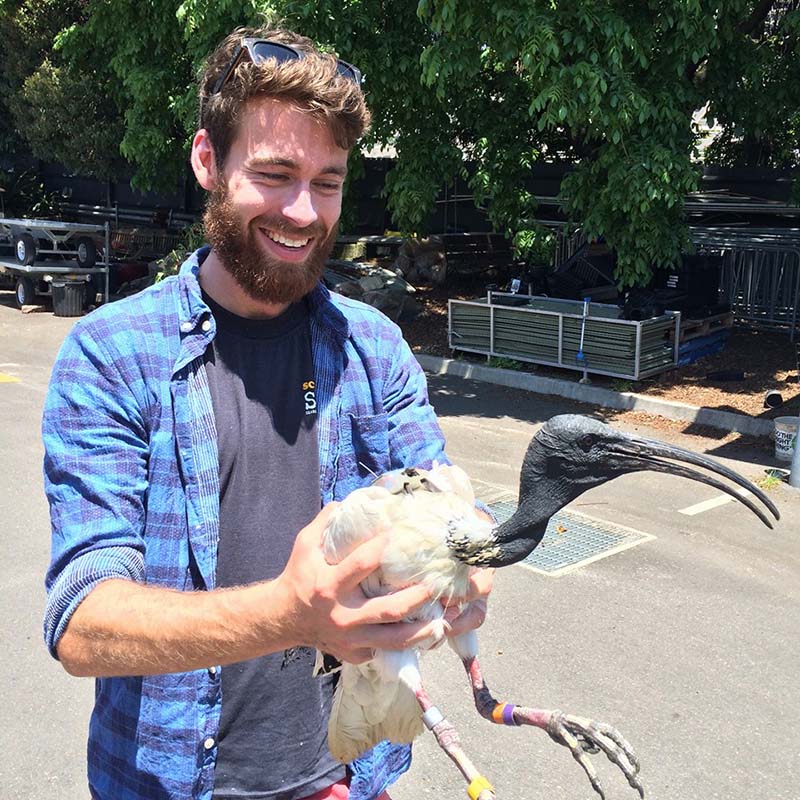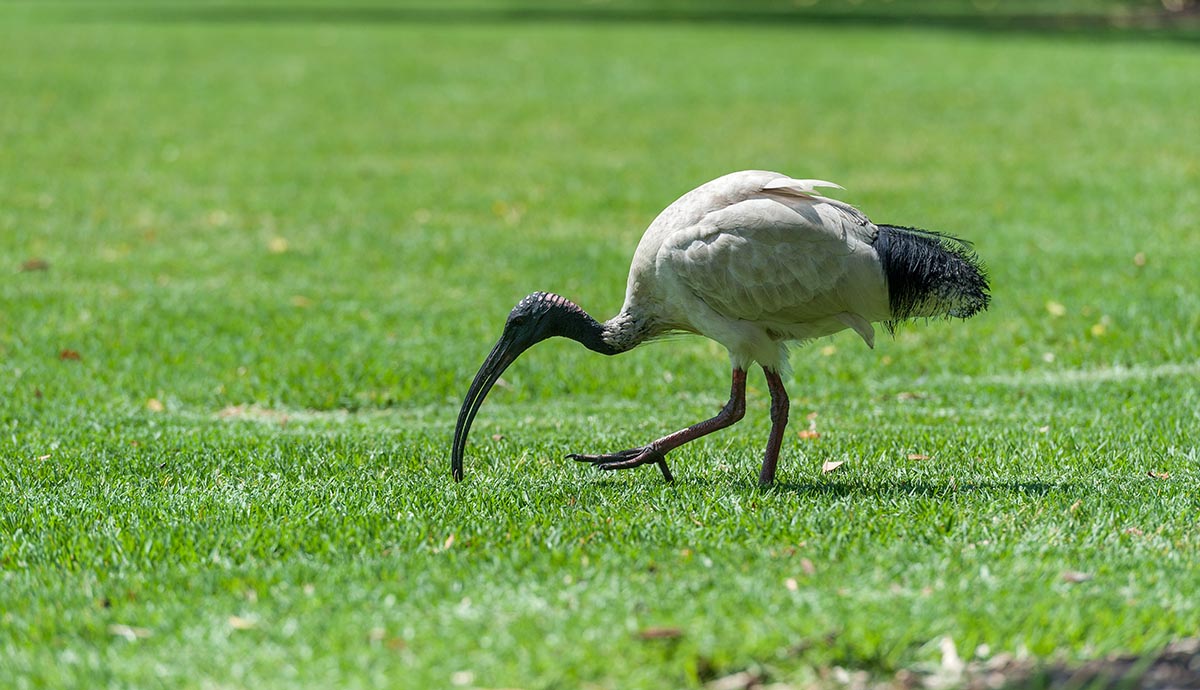April 12, 2018
How the urban bird gets the worm
Bin-foraging Australian white ibis turn to natural foods after rain
Despite their proven predilection for carbohydrates, when the weather changes, so does the diet of inner-city ibis. Research published in the science journal PLOS ONE demonstrates that the Australian white ibis, fondly known as the “bin chicken”, engages in complex foraging decisions mediated by rainfall.
Researchers from University of Wollongong, Royal Botanic Gardens, Sydney and Australian Museum quantified Ibis density, bin density, food dumping and picnicking in Sydney’s parks. They found that Belmore Park, adjacent to Sydney’s Central Station, was the stand-out in terms of fast food volume.
In dry weather, Australian white ibis congregate in Belmore Park at a density that is 10 times higher than other parks, including Hyde Park and the Domain – the central Sydney parks.
But after rainfall, ibis numbers drop in Belmore, a pattern consistent with seven years of survey data. No such decline was apparent in the other parks, in fact some increased their Ibis populations after rain.
Dr Richard Major, Principal Research Scientist, Terrestrial Vertebrates, Australian Museum said, “My Eureka moment was when I emptied my home-brew steriliser on my lawn and observed a handful of earthworms wriggling out of the soil.”
Building on this discovery, University of Wollongong Honours student Matt Chard took up the challenge and systematically dosed 1m2 quadrats of city parks with the new-found skin-irritant, both before and after rainfall.
“The carboy-cleaner was the perfect brew,” Mr Chard said. “Not only did it demonstrate that worms were 80 per cent more abundant after rain than in dry periods, but we found six times as many worms in the Domain as in Belmore Park.”
In between rummaging in bins and feeding on sandwiches, the ibis spend a large proportion of their day picking around for natural foods, the researchers found. They suspect that the high density of ibis in Belmore Park has depleted its worm population.
When the rain comes, many birds use their foraging memory to spread out from Belmore Park and head for greener pastures. There, they exploit the worm windfall that moves up in the soil profile. Indeed, the rate of worm consumption by Ibis was four times higher in wet weather than dry weather.
“Humans have complex interactions with wildlife and it is accentuated in landscapes where human impacts are high,” Mr Chard concluded.
Importantly, no earthworms suffered long-term harm from this research. “All worms were counted, rinsed in water and returned to irritant-free ground where they soon reburied – unless they were discovered by an opportunistic ibis,” Mr Chard said.
Professor Kristine French from UOW’s Centre for Sustainable Ecosystem Solutions, a co-author of the paper and one of Mr Chard’s supervisors, said it was important to understand how birds such as ibis behave in urban environments.
“Ibis have lost much of their habitat in the wetlands in Central NSW and now rely on living in Sydney and other coastal areas,” she said. “Living in cities is important for their conservation and we must learn to live with these animals and understand their needs. Matt’s work is a part of that research goal.”

